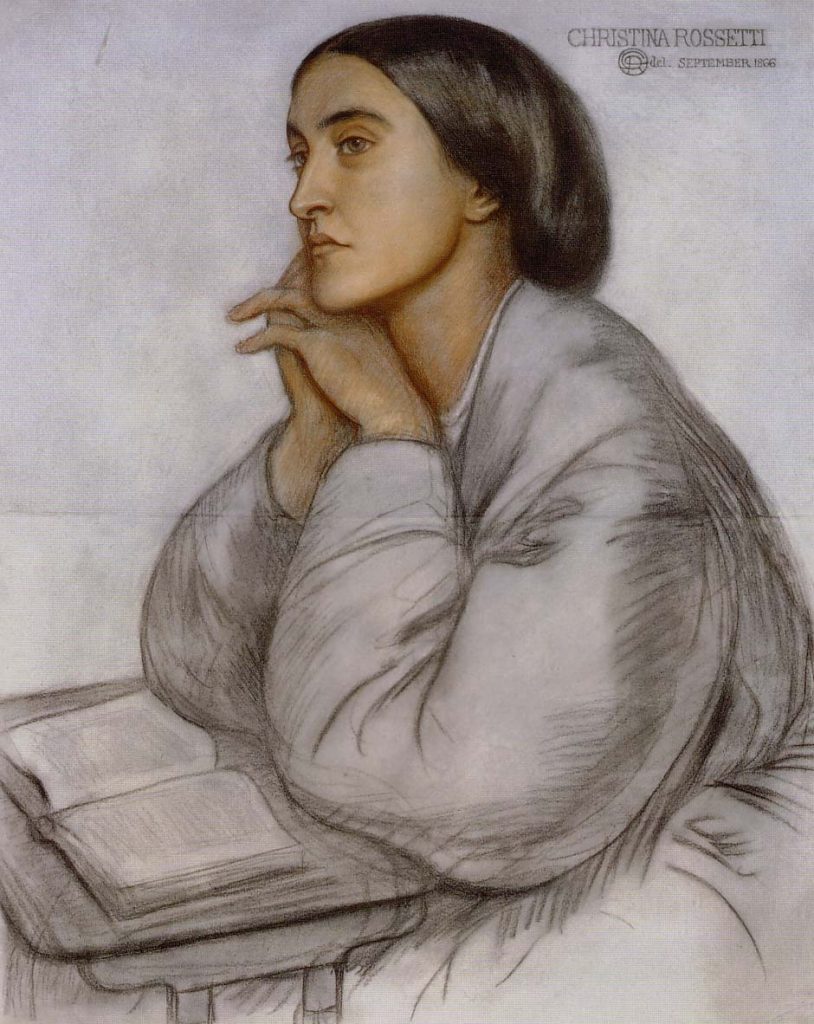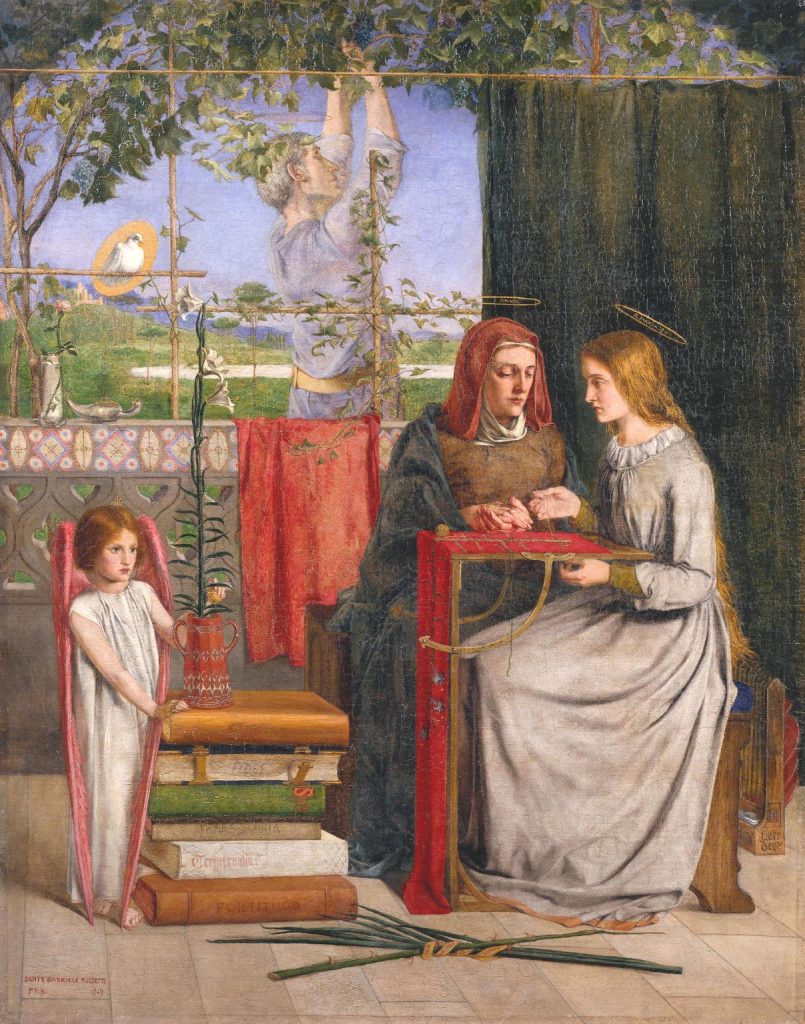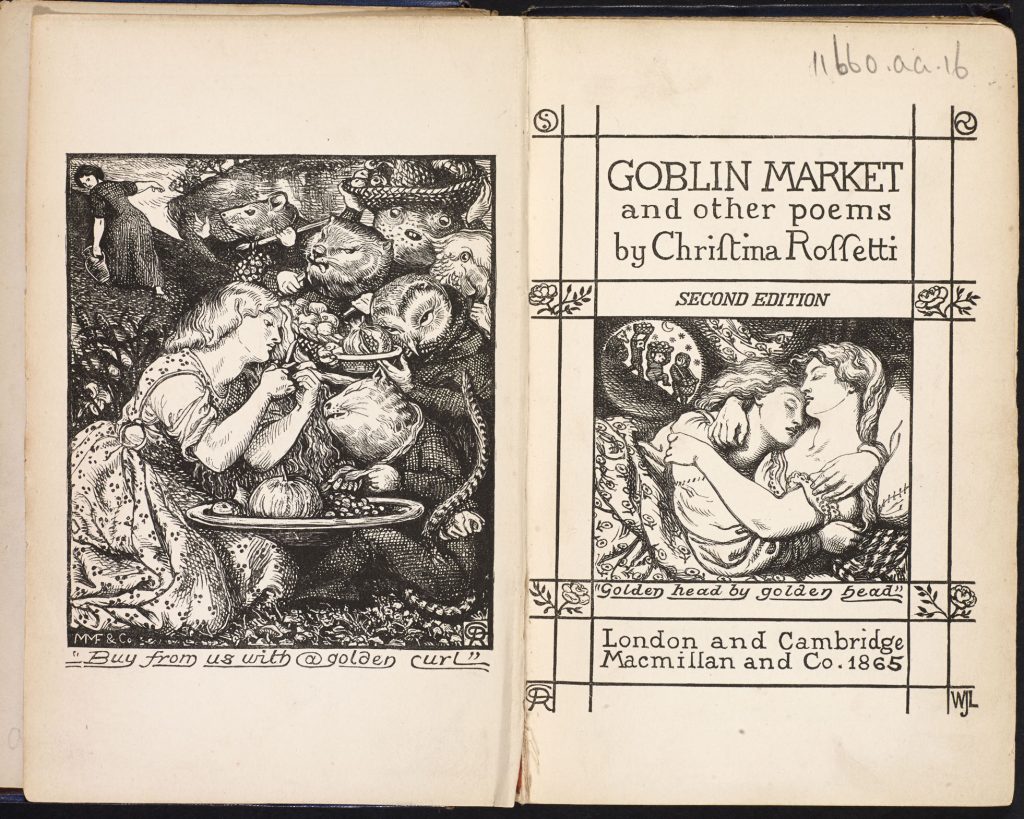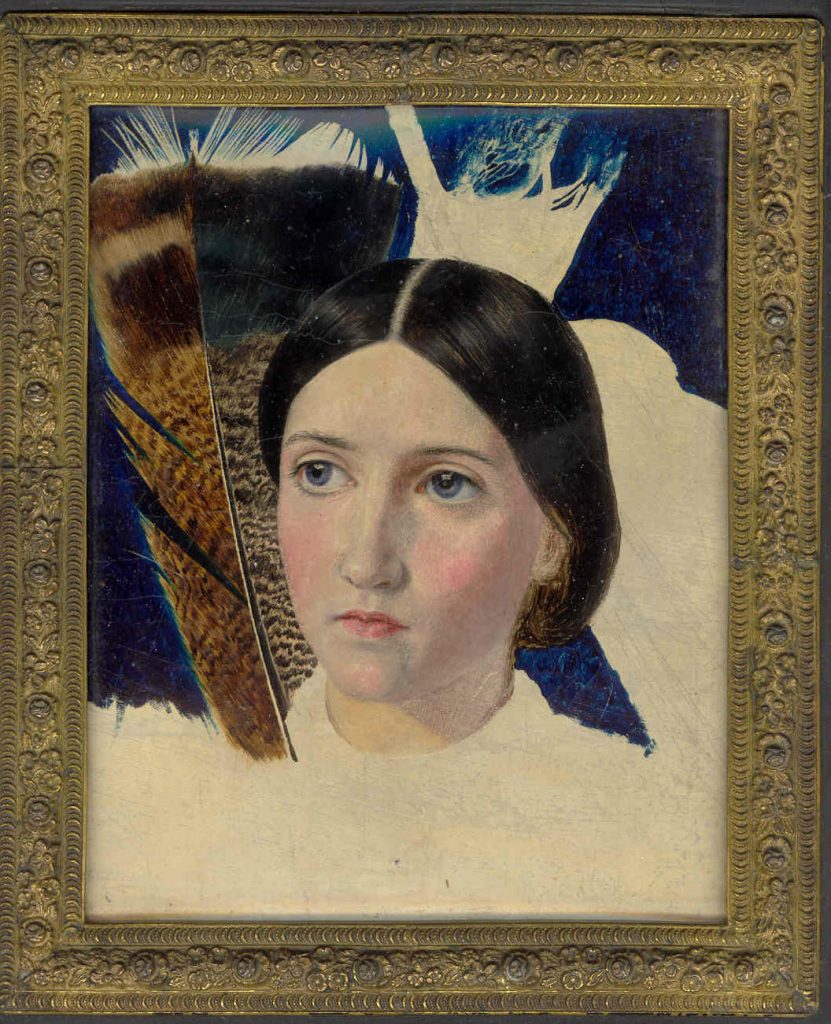Laura Knight in 5 Paintings: Capturing the Quotidian
An official war artist and the first woman to be made a dame of the British Empire, Laura Knight reached the top of her profession with her...
Natalia Iacobelli 2 January 2025
Christina Rossetti (1830–1894) is still beloved today for her timeless poetry—but her creative influence transcends the written word. By exploring the rich relationship between art and poetry, Rossetti contributed to the aesthetic innovations of the Pre-Raphaelite movement and beyond.

Dante Gabriel Rossetti, Christina Rossetti, 1866, Andrew Lloyd Webber Collection. The Rossetti Archive.
Born in 1830 in London, Christina Rossetti was the youngest of four children in an intellectual Italian-English household. From early childhood, she engaged with a variety of art, literature, languages, and culture. She also modeled for early portraits by her brother, Dante Gabriel Rossetti, a founder of the radical Pre-Raphaelite Brotherhood and one of the most influential artists of the Victorian era.
Like her brother, Rossetti also studied the visual arts. While her formal training was short-lived, art consistently played a role in Rossetti’s writing career. When Rossetti began publishing, her romantic, devotional, and children’s poetry captivated Victorian readers. Her work also won critical acclaim for its vivid imagery, lyrical language, and evocative subjects.
Christina Rossetti’s poetry was especially beloved by artists. Her writing directly informed iconic Victorian artworks and contributed to the aesthetic innovations of the Pre-Raphaelite Brotherhood and subsequent art movements.

Dante Gabriel Rossetti, The Girlhood of Mary Virgin, 1848-9, Tate, London, UK.
From the start of the Pre-Raphaelite movement, Christina was immersed in the inner circle of the so-called brotherhood. She modeled for several paintings, including her brother’s early depictions of the Virgin Mary. Rossetti also contributed poetry to the brotherhood’s short-lived magazine, The Germ.
Much like Pre-Raphaelite art, Christina Rossetti’s poetry can be strikingly direct and detailed, as well as sensuous and symbolic. As her poetry became increasingly well-known, Rossetti became increasingly fascinated by the creative interplay between poetry and art.
Alongside other members of the Victorian avant-garde, Rossetti did not necessarily view art and poetry as separate endeavors. Rather, when explored together, art and poetry could express deeper meaning and create a more holistic aesthetic experience. For example, Dante Gabriel Rossetti often inscribed poetic verses on the frames of his paintings, and many of Christina Rossetti’s poems were published with illustrations.
One face looks out from all his canvases,
One selfsame figure sits or walks or leans:
We found her hidden just behind those screens,
That mirror gave back all her loveliness.
A queen in opal or in ruby dress,
A nameless girl in freshest summer-greens,
A saint, an angel — every canvas means
The same one meaning, neither more or less.
He feeds upon her face by day and night,
And she with true kind eyes looks back on him,
Fair as the moon and joyful as the light:
Not wan with waiting, not with sorrow dim;
Not as she is, but was when hope shone bright;
Not as she is, but as she fills his dream.
The symbiotic relationship between visual art and poetry was integral to Christina Rossetti’s creative vision. Where traditional boundaries between visual and verbal expression blurred, the Victorian avant-garde—Rossetti included—saw potential.
Many artists naturally resonated with and gladly illustrated Rossetti’s imagery-laden poetry. Rossetti’s work also inspired the creation of significant standalone artworks, including The Minstrel Group by Julia Margaret Cameron, a pioneering art photograph with inscribed verses from Rossetti’s poem Advent.
Christina Rossetti’s interest in the interplay between art and poetry also informed her meticulous involvement in the publication of her work. She understood that the unity of her poetry with its illustrations, typography, layout, and bookbinding could elevate not just her commercial success but the intended meaning and aesthetic experience of her poems as well.

Illustration by Dante Gabriel Rossetti and prose by Christina Rossetti, Goblin Market and other Poems, 1865. The British Library.
At once a Victorian nursery rhyme and a timeless erotic tale, Christina Rossetti’s Goblin Market is among her best-known and most controversial poems. Goblin Market was first published in 1862 in Rossetti’s critically-acclaimed debut poetry volume. The long narrative poem tells the story of two sisters, Laura and Lizzie, and their fantastical encounter with the forbidden goblin fruit.
Dante Gabriel Rossetti’s woodcut illustrations for the first edition of Goblin Market weren’t merely a product of convenience. Rather, his visual contributions create an intentional and rich collaboration with his sister’s prose. The distinctive Pre-Raphaelite aesthetic of Dante Gabriel’s illustrations—centering a sensuous subject amidst highly-detailed, decorative surroundings—harmonizes with the intimate tone, sensory details, and sexual undertones of Christina’s verse.
The Rossettis’ collaboration was only the beginning of Goblin Market‘s impact. The poem inspired countless literary and artistic interpretations after its publication, including a 1973 feature in Playboy Magazine with illustrations by Japanese-American fantasy artist Kinuko Y. Craft.

John Brett, Portrait of Christina Rossetti, 1857, private collection. The Victorian Web.
The interweaving of art and poetry is a hallmark of the Pre-Raphaelite Brotherhood’s artistic and literary output and the movement’s historical legacy. This notion is also at the heart of other avant-garde innovations, including Walter Pater’s philosophies on aestheticism and William Morris’s Kelmscott Press.
Christina Rossetti was a vital contributor to these aesthetic developments. She wrote poetry that transcended the page and inspired art that broke boundaries. And most importantly, she masterfully weaved together the separate threads of art and poetry to holistically explore and express her creative vision.
Today, Christina Rossetti rightfully remains a crucial influence on art, poetry, and the space in between.
DailyArt Magazine needs your support. Every contribution, however big or small, is very valuable for our future. Thanks to it, we will be able to sustain and grow the Magazine. Thank you for your help!